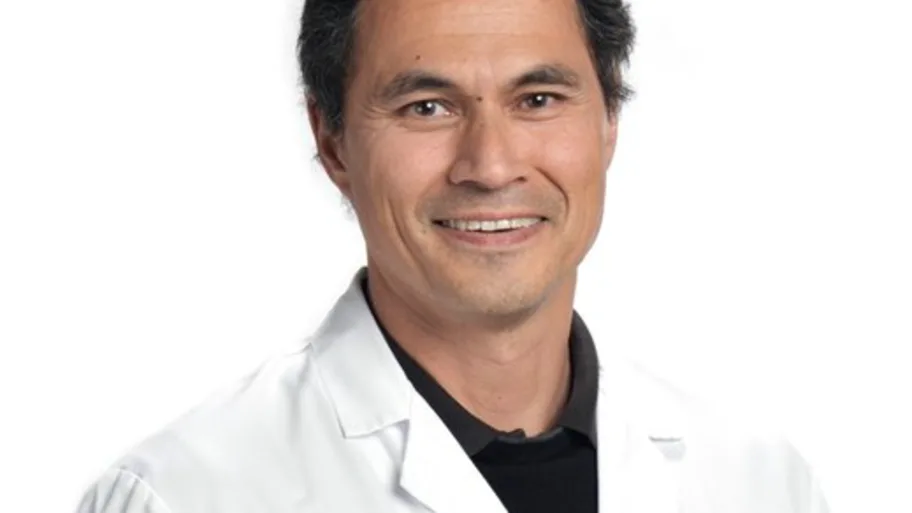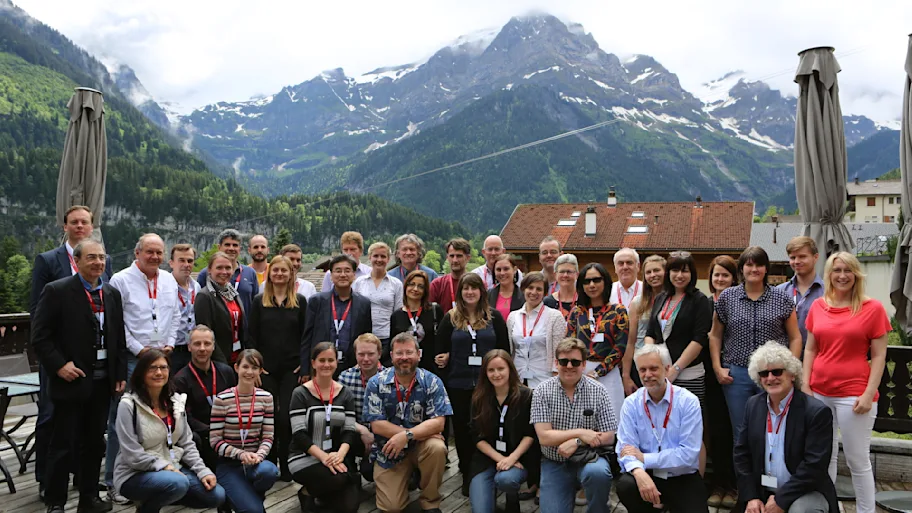
- Science news
- Health
- World Heart Day 2015
World Heart Day 2015

Prof Hendrik Tevaearai Stahel joined Frontiers in Cardiovascular Medicine as Field Chief Editor this month (Photo credit: University Hospital of Bern (Inselspital))
On World Heart Day, Frontiers presents an exclusive interview with Prof Hendrik Tevaearai Stahel, Associate Professor at the University of Bern and Head of R&D at the Clinic for Cardiovascular Surgery at the University Hospital. Prof Tevaearai recently joined Frontiers in Cardiovascular Medicine as Field Chief Editor.
What motivated you to become a cardiovascular surgeon?
As I wrote in my editorial for Frontiers in Surgery, section Heart Surgery, it all started when I was seven years old. I was injured and needed an urgent operation on my wrist. It was my first contact with the operating room, and I was immediately fascinated by this environment. I knew then I was going to be a surgeon.
During medical school I had the chance to spend a month in the cardiovascular surgery unit of Lausanne University Hospital. I will always remember the first time I saw a real heart beating in a patient’s thoracic cavity. The head of the clinic was a very inspiring and charismatic person, and this added a lot to the already huge respect I had for this discipline. A few years later, I finally became a cardiac surgeon.
But seven years ago I decided to stop my clinical activities. Maybe I matured a bit(!). In fact, I am driven by curiosity. I always want to know more and better my understanding. I realized seven years ago that I could learn and achieve more only if I stepped out of this very demanding surgical commitment, and I say this of course with all the respect I have for my colleagues and for the fantastic job they perform every day. This was obviously a very difficult decision I had to take and it took some years before I could honestly say that I didn’t miss it anymore.
Today, I can however also pretend that I have found a nice balance between my research activities, my involvement in our start-up company, and of course my private life. I believe a good balance between private and professional life is critical for both parties. In fact, I also know now that the best inputs and feedback we can get regarding our professional activity mostly come from outside our professional milieu.
What does your current research at Inselspital focus on?

We have several ongoing projects in our clinic. With a research team of approximately 25 people and many students, I see myself today more and more as the manager of this unit rather than a “real” researcher. Luckily, I can rely on a fantastic team of specialists and a very good team spirit, which is, by the way, one of the three values my team of researchers and I communicate and try to propagate.
Our research activity in Bern can be divided in three aspects: clinical, laboratory and technical. The clinical research activity is relatively traditional and consists of prospective studies where we test our own hypothesis but also evaluate new systems, as part of multicenter studies for example, and typically together with industry partners. But we also have a large activity based the continuous analysis on our own registry, which contains information on almost 30,000 patients. For a few years we have decided to invest in a real data management and statistical structure, which today works ‘independently’ from the other clinicians. This way the data can be optimally collected, controlled and cleaned to achieve high quality. We are also in the process of installing a monitoring process so that we can achieve a quality level that allows full reliability on the data we analyze. This way we seek credibility and therefore a better impact of our research, and eventually a benefit for our patients. Obviously, this way of managing clinical data also allows better protection of our patients’ privacy, a point that is certainly critical for the future of clinical research.
Our laboratory activity focuses mostly on the identification and evaluation of new alternatives to treat patients with end-stage heart failure. One major topic we focus on involves the hypothesis that we could one day make donation after circulatory death (DCD) a reliable and efficient source of hearts for transplantation. With that objective we work on the one hand on understanding the mechanisms of myocardial ischemia and reperfusion, and in this case mostly on the reperfusion aspects. On the other hand, we try to evaluate means that could be practically but also ethically acceptable in order to minimize ischemia-reperfusion injuries and increase the tolerance to ischemia-reperfusion. Finally we are interested in identifying early predictors of clinical outcomes so that we could provide the transplantation team not only a DCD graft but also information on the risk or chance this heart will correctly beat after transplantation.
Another focus of our laboratory research revolves around the understanding of how and why a reverse remodeling process sometimes takes place in a failing heart unloaded with a ventricular assist device (VAD). Indeed, similarly as for putting a limb at rest after a trauma, assisting the failing ventricle with a VAD allows in rare cases a certain degree of functional recovery.
A third activity focuses more on technical aspects of cardiovascular medicine. For instance, cardiac surgery is a discipline that is highly based on technologies, such as the heart-lung machine and other “pumping” systems including ECMO and assist devices. Our group has several collaborations with internal and external groups for the evaluation and development of such devices. For instance, we have largely contributed to develop and improve mini extra-corporeal circuits (MECC) with the aim of reducing the priming volume used to initiate a cardiac surgical procedure and therefore reduce the hemodilution that is commonly observed otherwise with traditional machines. It is with that objective in mind that we also initiate the development of our new low-volume (100 ml) cardioplegia. Today more and more cardiac surgeons use MECC systems in their daily activity.
What motivates you most about working as a researcher in the cardiovascular field?
Developments in the cardiovascular field are moving quickly. In fact, several aspects of my job as a researcher excite me every day. I am very lucky to be part of a very good clinic, with exceptional clinicians and excellent clinical results. But for most, I am very lucky that I was given the chance and the means to build up and develop our research unit over the last decade and bring it to a very good level. Now that the structure is in place, what enthuses me most is to see the passion that slowly catches most of my younger collaborators starting a project in our group. Of course, I probably still play a critical role in our research unit but today I don’t think the success depends only on me anymore, but rather on the collaborative culture that has been instilled over the years. Seeing my own collaborators themselves communicating their passion to newcomers is very satisfying and brings me a lot of energy. Hopefully this chain of enthusiasm will perpetuate to more and more researchers.
“What enthuses me most is to see the passion that slowly catches most of my younger collaborators starting a project in our group.”
Why did you join Frontiers in Cardiovascular Medicine as Field Chief Editor?
With Frontiers in Cardiovascular Medicine I have found an opportunity to transmit my enthusiasm of learning more and better and making the best out of this knowledge. As Field Chief Editor I see my role as a facilitator, a link between specialists. But I also see my role as a “provocateur”, the one who asks those questions you don’t necessarily want to hear. For instance, even if we perform well I will keep checking to see if we cannot perform better, whether on the quality of the manuscripts that we publish, or on their impact on our readers. I will also keep trying to motivate the large team of editors and reviewers to work with that philosophy.
“With Frontiers in Cardiovascular Medicine I have found an opportunity to transmit my enthusiasm of learning more and better and making the best out of this knowledge.”
I believe we, as editors, have the possibility to really assist authors to improve the quality of their work. How? I have a few ideas I am developing, some of which I hope will become reality in the coming months. Frontiers offers the ideal technical and IT support to innovate in the way we, clinicians, researchers and other persons concerned with cardiovascular medicine, communicate with each other.
What role will open-access play in advancing cardiovascular research?
The nicest thing about open-access is that it gives everyone the opportunity to access the latest available scientific results and clinical updates. Open-access also allows results to be published much faster than in traditional publications. Finally, because it is basically all based on internet approaches, it opens the door to new communication strategies. I personally think this aspect is the most critical and the opportunity Frontiers in Cardiovascular Medicine will have to take, i.e. redefining a publication’s impact.
Over the last decade, authors have progressively given more and more importance to the impact factor when selecting a journal to publish their work. Impact factors are relatively easy to calculate and offer us a way to “rank” authors and institutions. But the real impact on the medical community and for most on the patients benefit is probably poorly correlated with this value. Another critical point to me is to characterize the profile of readers and writers. Publishing could be seen as a luxury: you need time, money, access to patients or laboratories; you need experience on how to design a good study, how to perform the right statistical analysis and of course the ability to write in a clear, comprehensive way. These are all aspects which to me restrict the access to publication. This needs to be changed since I believe many more clinicians and researchers than are currently publishing have something to say. I believe open-access approaches and especially the Frontiers approach have the potential to realize these changes.
Please can you tell us a little more about what Swiss Cardio Technologies does and what motivated you to set it up?

Swiss Cardio Technologies is a start-up company I created in 2008 with five other partners: two doctors and three people with experience in business and company management.
Our focus is the development and commercialization of a cardioplegic solution, i.e. a solution to arrest and protect the heart during heart surgery, which we believe has several advantages over existing methods. We have just completed a phase III clinical trial in Austria and are waiting now for the results of the data analysis.
Like many things I initiated in my career, the motivation to set up this company was multiple. On the one hand, I realized it was the only way for me to personally further accompany the development of a project we initiated in our laboratory. Today, the translation of a laboratory discovery into a product implies at a certain moment to “give” it to other partners. At the end of the process, a long series of partners have participated and we, initiators, may have been forgotten. But another motivation was also to discover this process of translational medicine, not only the theory of it, but the real practical aspects, the IP processes, the strategy, the regulatory aspects, the production and distribution challenges, and of course the economical pressure. I was for instance surprised to discover that it is critical for a good collaboration with the multiple partners involved in this translational process to understand the way they see the world of cardiovascular medicine, which is quite different to the way we see it.
Now I guess the critical point of this question concerns the business aspects of this parallel activity. I certainly realize the potential conflict of interest that accumulating activities may generate. On the other hand I believe I am in a system that helps me, controlling that what I am doing is right. I belong to a university institution, which is fully aware of our company’s activity and to who we report on a regular basis. Transparency and honesty are two critical values that make our lives easier. In fact these are two of the three values we, with my research collaborators at Inselspital, communicate and try to propagate via our website and email signatures.
At the beginning of this adventure we were occasionally harshly criticized, sometimes by our own colleagues, with the assumption that we wanted to “make even more money”! Today, seven years later, I can say that I haven’t earned a single penny more that what I would have if I had simply continued to do my quiet and somewhat secure job at the hospital. In fact it was rather the opposite considering that I needed to invest more time and energy to keep it on track. What I have earned though is a wide experience, a large network of persons interested to all aspects of cardiovascular medicine that might be complementary to the single medical point of view. Now I want to bring this experience together and use Frontiers in Cardiovascular Medicine as a platform to connect these different groups of people, including business partners. In fact I believe there are occasionally some “interest” in having conflicts of interest. But I guess this is a point that would need some more reflection.
Finally, how do you think the field of cardiovascular medicine will evolve in the next twenty years?
The entire medical field is undergoing radical changes and the cardiovascular field is one good example to illustrate these changes. I see at least five major developments.
The first one concerns the integration of new technologies and especially the combination of IT, nano- and bio-technologies in wearable and implantable systems, which will in the near future constantly inform and assist us on our health condition and performance.
The second major change, which partially goes together with the first one, concerns the way we collect and share information. The ‘big data’ phenomenon is about to find major applications in the cardiovascular field, for instance for regulatory approval of new devices and drugs. In the coming future only small studies will be necessary to decide whether a drug is safe and efficient enough to be brought onto the market. Indeed, combining specific information taken out from these studies, together with medical and non-medical data already accumulated in large, strictly controlled and monitored databanks, will allow to calculate or extrapolate information with at least the same reliability as the results we currently obtain with large, long, expensive and sometime manipulated randomized controlled trials.
The third development concerns the expectations of our “clients”. With the new developments and understandings in omics technology it is obvious that each patient must be treated as a single particular entity. We thus move toward an era of personalized cardiovascular medicine. Patient expectations are also slowly changing. Whereas patients are traditionally treated when they are sick, they will ask more and more for assistance to improve their own performance even if they are healthy.
“With the new developments and understandings in omics technology it is obvious that each patient must be treated as a single particular entity.”
The fourth change concerns the globalization of cardiovascular medicine. Whereas highly specialized, complex and expensive were until recently reserved for privileged regions, most of these procedures are starting to be performed in the rest of the world. Obviously there is still a lot to do, starting with good bilateral communication, the identification of local needs and possibilities and the organization of adequate solutions.
Finally, the fifth change concerns the doctors who themselves will change as well as their function. On the one hand we observe, like in many other fields, an increasing number of women entering the profession. On the other hand, many aspects of our profession will be either automated or taken over by technicians. Decisions will be increasingly assisted or even taken by computers who will compare individual findings with the mass of other medical and non-medical information collections.
The big questions are how fast will these changes take place and how are we going to integrate them? I guess these changes are per se very good but the success of their acceptance depends on how they are communicated, and on how complementary aspects are taken into account, such as ethical, economical and political aspects. All aspects that we want to better consider in Frontiers in Cardiovascular Medicine.

Our delicious Frontiers World Heart Day cake, baked by our talented Journal Operations Specialist Aida Paniccia, PhD.






